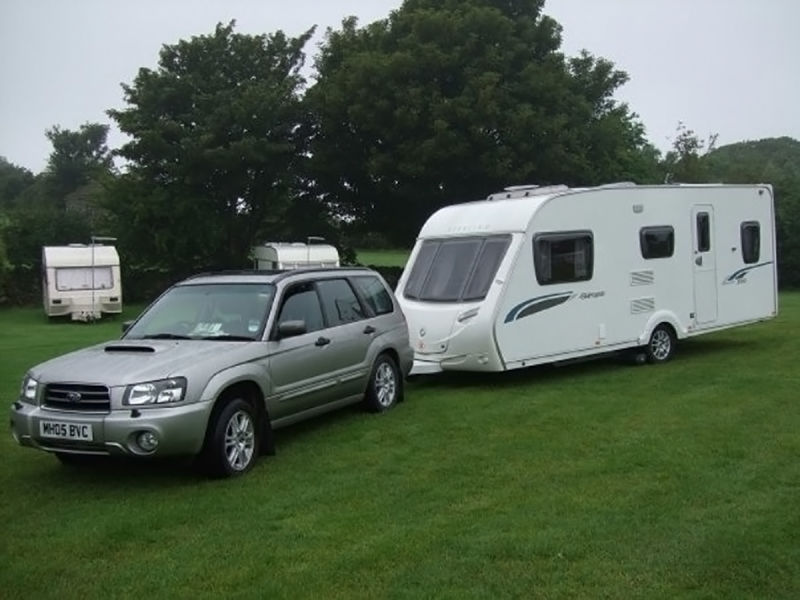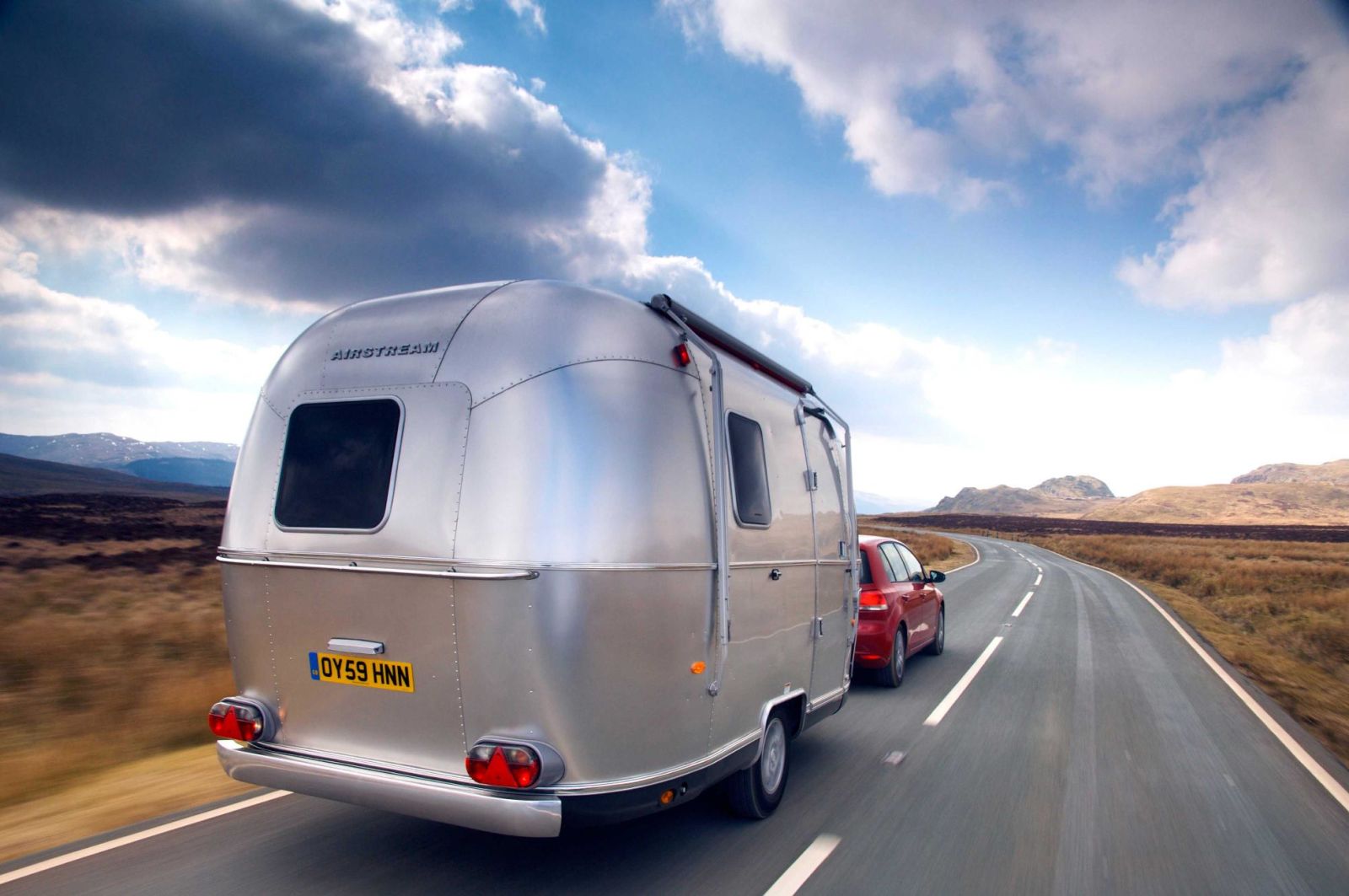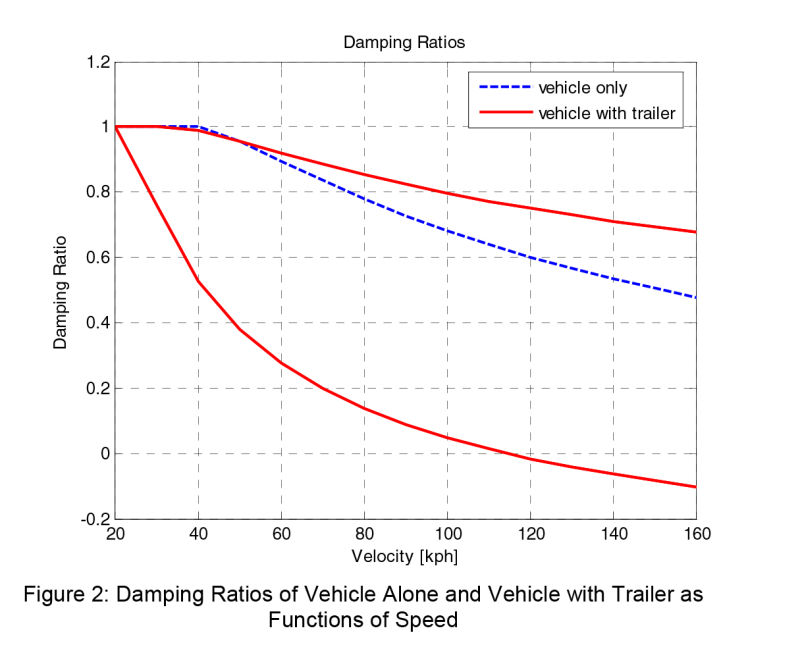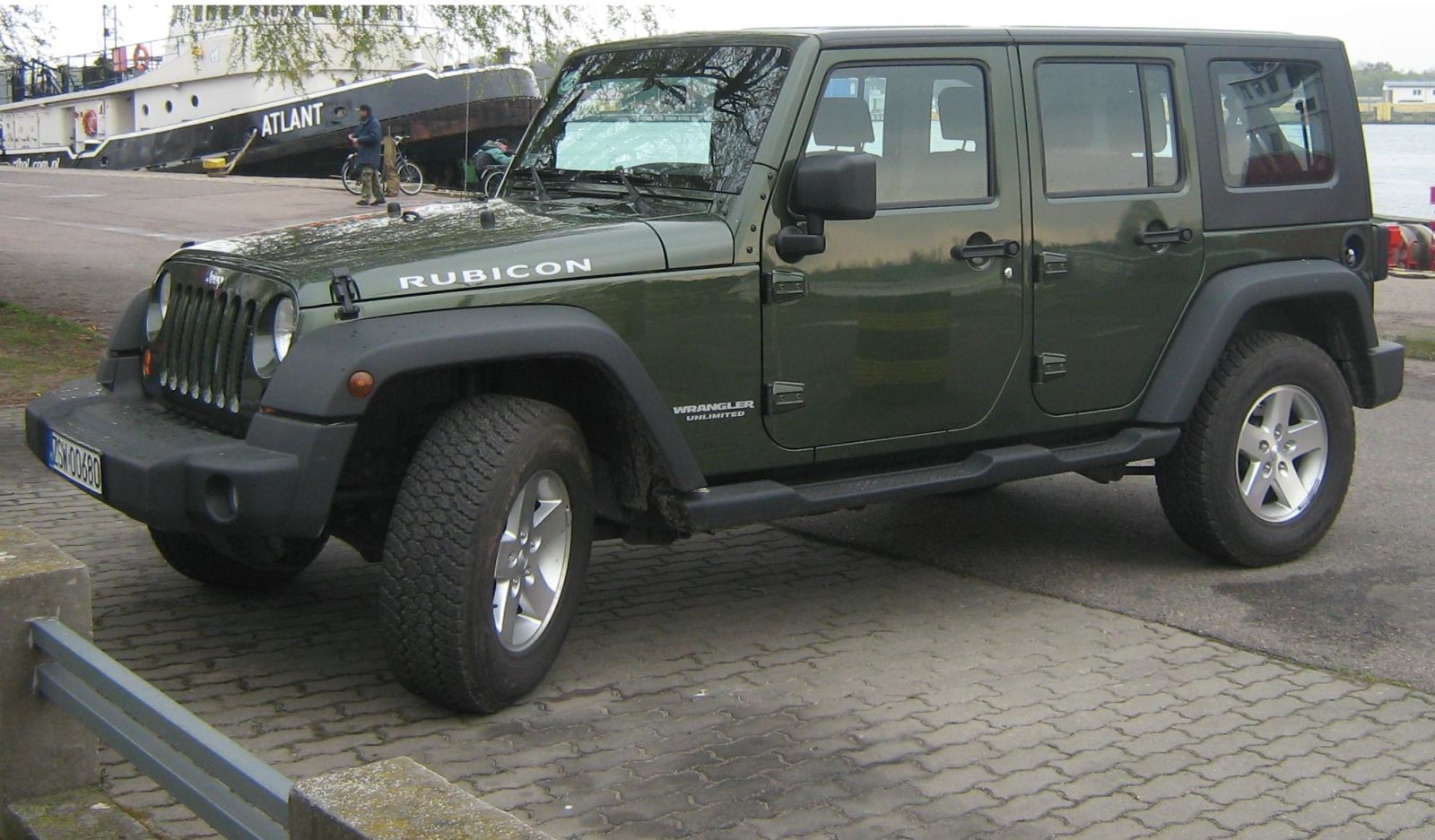
Have you ever wondered out loud and at parties why European countries and other non-American countries seem to be able to tow houses with 1 liter econoboxes where in the US you would need a peterbilt to pull the same load? No? Me too! Wait did you say no? Hey where are you going! I’ve got science!
This question first came to my attention when I owned a forester, a 2005 XT manual to be precise and, having grown up camping and with the addition of a family member started to weigh my options in a towed camping array. Given that the forester is a small car by American standards I wasn’t surprised by the lowish 2400 lb tow rating but upon searching for a light weight travel trailer that my car could handle I stumbled upon several images like this from Australia, the UK and other such places.

The hell?! That trailer, or “van” as they are called in the land of spiders, HAS to weigh more than 2400 lbs. and I was right. As it turns out in Australia, an SG forester XT...just like mine...is rated to tow 1.8 (braked) tonne or just under 4000 lbs. Well obviously the Aussies have a super tough version that’s different than mine...I mean, everything is tougher in ‘Straya right? Nope, turns out they are, aside from LHD vs RHD, the same exact thing. So what gives? I see this all the time in European countries and as shown by top gear; huge caravans being towed by dinky little things. How is it possible!

The quick and easy response would be to say that the litigious US doesn’t want you towing something that big with something small or some type of small car hating conspiracy cult or something like that but what about science? Can science help? It turns out that it can! After little thought I decided to investigate, I mean how hard could it be? Its not like its rocket science.
Given that I only managed one year in my mechanical engineering program before switching to communications, I know is phoney major, my first step was to consult a rocket scientist. He promptly told me we was busy doing science things but turned my attention to a technical document, written in 2008 by Delphi published by the SAE, to investigate the dynamic properties of articulated vehicles (cars and trailers...see sciency already!) and the effectiveness of trailer sway mitigation techniques.
It’s pretty math heavy and I’m not sure I understand it completely but from it I gleaned a lot of information. Here goes:
There are a lot of variables of physics that act on a trailer and vehicle combo that are outside the scope of traditional vehicle dynamics, don’t believe me? Bam!

Dem physics! Mmm! There is roll, yaw, yaw stiffness, static stability and dynamic stability (oscillation) and a host of variables that interplay with the host vehicle but to simplify this article and to dilute the science to a point I can understand I’m going to focus on the one that causes the most trouble; dynamic stability, sway or as James May likes to say a “Tank slapper”.
For reasons that the math savvy will understand the basic conclusions are these:
- The effects of dynamic instability are relative to speed
- The speed at which the effects become an issue lowers based on the following variables:
- Dynamic instability increases as the mass of the trailer gets larger in relation to the mass of the tow vehicle (trailer to tow vehicle ratio)
- Dynamic instability decreases as the center gravity moves back in relation to the axle
- Vehicle wheelbase affects stability
- among others not covered (lateral stiffness pivot point to rear tow vehicle axle, etc)
The meat of it comes in with the center of mass and its relationship to the trailer axle center line: When the center of mass is ahead of the axle (B2 in the above diagram) stability is increased and as the distance B2 gets smaller stability is reduced.
As it related to speed, the study looks at variables in center of mass in relation to axle placement and vehicle speed as a function of whether the trailer is likely to sway and particularly at what speed it will be a decaying oscillation (takes care of itself) or an exponential oscillation (building to a crash)
Here is what they found:
First they wanted to know what kind of stability a truck had on its own, described by a damping ratio, simplified: positive ratios mean stability (decaying oscillations) and negative damping ratio means the opposite.
Up to 100 mph and beyond, the truck had a damping ratio ranging from 1-.5...stable.

With a trailer in tow the tow vehicle’s damping ratio actually improved but the trailer showed a damping ratio that ranged from .3 at 37 mph and crossed into the negative at 71 mph. 71 mph would be considered the threshold for stability meaning that; at that speed your oscillations would neither decrease or get worse.
This is using a mathematical model with numbers that I didn’t find, but they do publish a real word confirmation study that tests 3 different configurations with variable speed.

In the first configuration the center of mass is in front of the axle(s) and the tongue weight is ~10%

In the second configuration they move the center of mass to just in front of the axle with the tongue weight at ~3%

In the final configuration they put the center of mass behind the axle line with a -10% tongue weight. The results are predictable for people who’ve experienced these scenarios first hand.
- In the first example, the truck and trailer remained stable up to and beyond 100 mph.
- In the second example the truck and trailer crossed a stability threshold at 65 mph.
- In the third example the truck and trailer crossed a stability threshold at 45 mph.
So what? Andrew already told me to put the trailer weight more to the front than the rear what does this have to do with US tow ratings!
Settle down, I’m getting there.
As we’ve pretty clearly established, towing a trailer is much more complex that simply “I have the HP to pull this” and even with a great cooling system a monster engine and trailer brakes you can’t just hitch up any weight you want and just because you got up to speed, assume you are good to go. That’s not to say these things aren’t important factors in towing safety, just beyond the scope of this discussion.
Every vehicle has a weight limit, called the GVW (Gross Vehicle Weight) GVWR (Gross Vehicle Weight Rating) or MAM (Maximum Allowed Mass) that stipulates how much weight the vehicle can safely handle. In addition there are Gross Axle Weight Ratings (GAWR) that stipulate how much weight can safely be carried over a given axle. Despite what some people tell you, these are serious numbers and should not be ignored if you want to avoid a fiery death.
A GVWR minus the curb weight is how much you can put in your vehicle (persons, gear and fuel) so long as that weight is distributed in a way that it doesn’t exceed the GAWR of the front or rear axles and is sometimes called the cargo carrying capacity or payload. Lets use as an example a 2014 Jeep Wrangler unlimited Rubicon.

photo: wikipedia commons
With a curb weight of 4,330 (manual or course) and a GVWR of 5400 it means you can safely put 1070 lbs of people fuel and gear in there before reaching a point of safety concern.
It’s been established in this technical paper that having the trailer axles be behind the center of mass is ideal (too far behind creates other non-dynamic problems I’m ignoring for the sake of this article) but as you do that you increase the tongue load, and consequently the amount of weight on the rear axle and at the same time you un weight the front axle (not good). Using 10% as a rough guide (most in the US recommend 10-15%) shows between 100 and 1000 lbs on the rear axle based on how heavy your trailer is (1,000-10,000 lb trailer weights). Doing this gives the trailer a good base stability point but also loads the tow vehicle up and weighs down the GVWR and, more importantly, the GAWR. Given the trailer weight at the beginning of this article (4000 lbs) and using the 10-15% formula, its easy to see how 400-600 lbs, plus passengers and cargo on the rear axle could easily max out the GAWR for the forester (given the GVWR - Curb is only 900 lbs) so the question then is...how to do they do it elsewhere?
The answer is simple but first, lets summarize the physics:
- The worse the ratio between trailer and tow vehicle mass the easier it is to have oscillations and the more likely they will be uncontrollable.
- 10-15% tongue weight with the mass in front of the axle is ideal for dynamic and static towing
- The greater the tongue weight the more compromised a tow vehicle’s suspension attitude, GVWR and GAWR become.
- Speed amplifies any of these problems (low tongue weight, high trailer to tow vehicle mass ratio, etc)
Okay, so for this article and in keeping with the top gear theme I looked up how you tow a trailer in the UK. here is what I found.

- Standard drivers license allows for 1600 lbs trailer weight if gross combined is less than 7700 lbs (vehicle and trailer)
- E entitlement (additional licensing) for towing above 7700 lbs gross combined. Unless you got your license before 1997, then its up to 18188 Gross combined.
- 26455 lbs gross combined weight (trailer and vehicle) requires a C1+E license.
- Trailer size restrictions are 22 feet x 8.33 feet up to 7700 lbs gross combined.
- All trailer above 1600 lbs to have trailer brakes
- Max tow speed 60 mph on motorways (slower on other roads)
- Drawbar nose weight 4-7% (150-330 lbs total max) recommended
In the US, these laws vary state to state so I picked a conservative state where towing heavy loads by the masses is pretty normal; Utah.

- Class A drivers license allows for up to 26,000 Gross combined vehicle (trailer and vehicle).
- 26,001 requires a CDL for hazmat, 16+ passenger, articulated gross combined or commercial towing.
- Trailer size restrictions are 14 height x 8.5 wide and 65 combined train length.
- All trailers 2000 lbs and up require trailer brakes.
- Max tow speed is the standard passenger car limit (65-80 mph) unless posted.
- Tongue weight max 100-1000 depending on receiver class (draw bar, more for 5th wheel)
Compared to the US, UK drivers can tow less weight and size without a special license and the max motorway speed is 60 versus up to the legal limit (or the trailer tire speed rating, which ever comes first). Why the difference?
The most important number to look at is the % of weight over the “nose” or tongue for the UK vs the US. In the UK, the thinking is that if you reduce the tongue weight you can pull more without risking maxing your GAWR out or nosing up the vehicle dangerously and as a result the trailers have their mass much more centralized over the axle which means that the only thing the tow vehicle needs to do is pull in a line, which is less stress on the components. Sounds good right?
However, if you’re still awake you will recall that at low tongue weights with the trailer mass more closely centered to the axle you have a much increased risk of destabilizing oscillations. Given that the trouble really starts, according to the math and the real world example, around 65 mph its no wonder that the UK has a strict limit on trailing and why Jeremy Clarkson has a rational hatred of caravans.
To boil it all down, the reason that American vehicles are rated to tow less is based on a difference methodology for tow safety.
US tow safety prioritizes a naturally safe dynamic situation so that more people can pull at freeway speeds with less likelihood of incident. There is no doubt that using this method results in an inherently safer tow situation as it relates to vehicle dynamics.
UK tow safety allows for the possibility to carry more weight, but erring on the side of caution with far less safety margin in respect to the physics.
Bottom line - Can a tow vehicle pull a heavier trailer there than is rated for here in the US? Yes, with some provisions:
1. The closer the trailer weight gets to the vehicle weight the slower you will need to drive.
2. DO NOT exceed 65 mph with a tongue weight in the 4-7% range, this is a guaranteed way to sway and 65 is the max, go slower in regards to #1.
3. None of this takes into account crosswinds, cooling systems, hp, or braking effectiveness (or legality).
Moral of the story
Europeans! Be proud that you can pull that huge caravan with your tiny car.
Americans! Be proud you can pull more weight in total and with a greater degree of safety and at higher speeds than our Euro friends.
Note: DON’T assume for one second, Americans, that you can simply use Europe as a guide to towing above your limit, its not going to be safe at our speeds DON’T put me and my family in danger or embarrass us in front of the other countries.